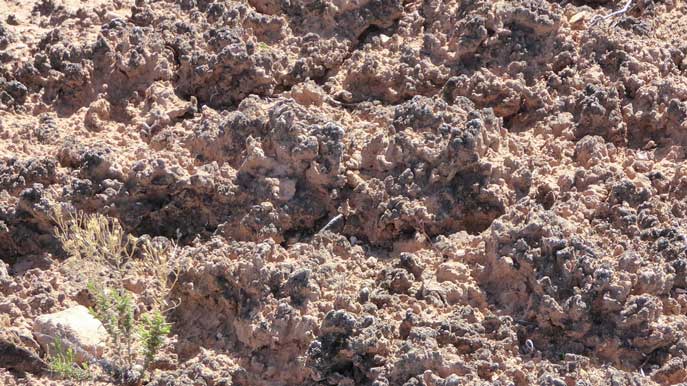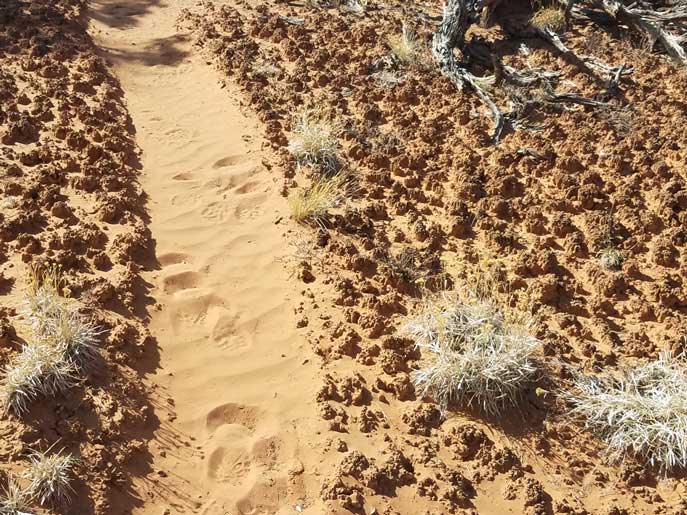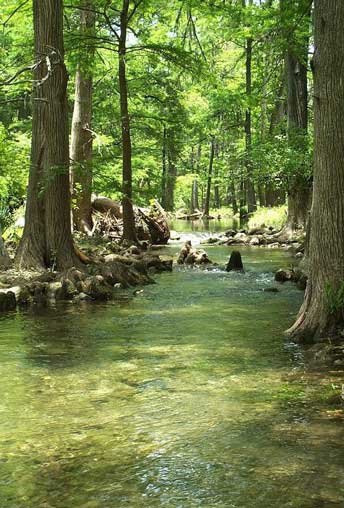Comments from the Chair
Bexar ozone fight continues
Environmental Protection Agency (EPA) in July officially designated Bexar County as in “Non Attainment” for ozone, leaving surrounding counties as “Attainment/Unclassifiable”. Some officials are talking of lawsuits or other resistance to fight this clearly appropriate designation for Bexar County (the exclusion of surrounding counties in our Metropolitan Statistical Area (MSA) is, on the other hand, unprecedented).
We now have until the end of 2020 to institute programs and regulations that achieve, by that date, attainment of 70 ppb (or below) for ozone monitor levels, per Clean Air Act (CAA) standards. For a better understanding of these issues, I recommend these resources :
- The presentation by Steve Dayton of TCEQ, which includes a section titled Volkswagen Environmental Mitigation Trust for State Beneficiaries. This will be of interest regarding the goal for the settlement funds to "Prepare for Increased and Sustained Use of Zero Emission Vehicles." The San Antonio area is considered a "primary area" for settlement funds distribution and is currently slated to receive $73,554,754 or 35.14% of the total allocated to Texas.
Alamo Area Council of Governments (AACOG) wants to be the primary regional administrator regarding funding distribution; however, TCEQ is planning to use competitive bidding and administer funds directly.
For further information, view the Texas Emissions Reduction Plan & VW Update [TCEQ, Steve Dayton; AACOG AQ Committee, August, 2018]. - The presentation by Brian Foster and Donna Huff of TCEQ, which was the first presentation by the State of Texas providing the outlines of the planning process which the state will direct due to the recent Non-attainment Designation for Ground-Level Ozone by the Environmental Protection Agency.
See San Antonio Area Update: 2015 Ozone NAAQS [TCEQ, August 22, 2018; AACOG AQ Committee]. - The TCEQ “Draft Mitigation Plan” is available for full review. More information is available at TCEQ's page on the Texas Volkswagen Environmental Mitigation Program.
Please submit comments, by October 8, 2018, to VWsettle@tceq.texas.gov. Here are the comments I submitted, for your consideration.
Hill Country quarry, crusher, cement and aggregate industries
There is a rush of development and permitting of these facilities, especially along Hwy 46 between Boerne and New Braunfels. Stephanie Ertel, a candidate for state representative in District 53 (covering much of the Hill Country), was in attendance at our September meeting on recycling, and spoke to us briefly about this important issue for our Hill Country neighbors.
These facilities bring much dust, noise, and truck traffic to their rural neighbors, and threaten air and water quality. Read about some of the issues with these facilities from the Stop 3009 Vulcan Quarry campaign.
This campaign is evidence of widespread and growing opposition to these facilities in rural communities, with resolutions from numerous local governments. At the same time, it demonstrates how little authority local rural community and county governments have to impact their growth, and how carefully and narrowly TCEQ must follow its own restricted legislative authority.
You are urged to review the Vulcan quarry issues and submit comments to TCEQ by October 15th. If you live within 5 miles of this proposed site you also may request a contested case hearing (CCH) by the State Office of Administrative Hearings (SOAH), which would be especially helpful. Before doing so, read Preparing for the Contested Case Hearing on the campaign's website.
City dealing with solid waste
Our September General Meeting on 9/18/18 featured presentations from City of San Antonio (CoSA) Solid Waste Management Department (SWMD), and Christopher Moken of Re-Mat. We learned a lot about current local recycling efforts and challenges. Visit the ReWorksSA website for more information.
I found especially interesting the following:
- Our recycling and organic waste materials go to private contractors, and so much of the information we have requested to better quantify our local programs is “proprietary” and thus hidden behind another “P3” public-private-partnership”, similar to the problems of opacity that we have with Vista Ridge Pipeline.
- Our recycling and organic contamination rates are improving but still over 20%. Contamination is a major impediment to getting materials properly disposed of in our “single stream” system (as opposed to separating materials at home and business before going into a recycling bin, as done in other countries). Contamination by diapers is an unbelievable problem still, resulting in over $1M in fines paid by CoSA to the contractors last year.
- Mr. Moken’s Re-Mat effort to get mattress recycling here faces the obstacles of very cheap local land fill costs and lack of funding support on state or local levels. The most successful programs use EPR (Extended Product Recovery) legislation to fund recycling costs up front at product sale. In Texas we have this program for electronic product recycling only.
Some of my questions for SWMD (some still partially unanswered) are at this link.
Opposing the Texas radioactive waste dump
Congress is pushing for “interim storage” of High Level Radioactive Waste (HLRW). The U.S. House passed HR 3053 to facilitate this, but the bill has not moved in the Senate and hopefully will die.
You will see its sponsors include many Congressmen from urban areas near nuclear power plants. This is a gift to the nuclear power industry, which is eager to divest itself of decades of accumulations of spent nuclear fuel rods. These are currently stored on site at every nuclear power plant around the country, which is where we believe they should remain until the federal government lives up to its previous commitment to develop a permanent repository for this waste, which will remain highly toxic for thousands of years.
We believe the heavily guarded nuclear power plants are themselves the safest place for “interim storage”. Moving this HLRW to West Texas (or Eastern New Mexico, the two main proposed sites), and again to a permanent site will double transportation risks. We fear it will also remove any political will to spend the many billions of dollars needed to develop a permanent site, and move thousands of train loads of this material a second time.
Once away from the urban population centers that used this nuclear power, out in largely (but not really) unpopulated West Texas/Eastern New Mexico the “problem” will be forgotten, making the inadequate “interim” site the de facto permanent site. Many communities along probably shipping routes, including CoSA and Bexar County, have passed resolutions in opposition (“Non-Consent”) to these “interim” storage shipping plans.
Comments on the West Texas HLRW (Waste Control Specialists--WCS proposal) are due October 19th at NRC (Docket 72-1050). Here are the comments I submitted. Submit your own, and get more information about the dump, at the docket page on regulations.gov.
And be sure to check out the Don’t Waste America!, No Nuclear Waste, and Nuclear Watch New Mexico websites and also this article by the Lone Star Chapter.
by Terry Burns, M.D., Alamo Group Chair
October General Meeting
Join us for our October General Meeting. Speaker(s) and topic(s) will be announced on our website calendar.
Tuesday, October 16th
6:30 p.m.
William R. Sinkin Eco Centro, 1802 North Main Avenue
Map
This event is free and open to the public.
Don't Tread on Me!
Biological soil crusts, aka cryptogamic soil

These important and vulnerable soil crusts exist in many of the more arid areas on Earth. They are symbiotic and opportunistic communities of algae, microfungi, mosses, cyanobacteria and other bacteria. These form a living mulch and reduce wind and water erosion, and may constitute up to 70% of the living cover in plant communities.
They also fix nitrogen, thereby improving the soil for plants. At SoilCrust.org there are a bunch of pictures of crusts.
Where to find them
Soil crusts are extremely common in Utah. Areas as densely packed with crusts such as the picture below are everywhere. So if you are hiking in such spots surely stay on existing trails. If there is no trail consider going somewhere else, or at least look for existing footprints and re-use those, or walk in channels formed by running water, or do rock-hopping.
Keep off the crusts!
As the Wikipedia article (coincidentally with another picture at Hovenweep) says:
Biological soil crusts are extremely susceptible to disturbance from human activities. Compressional and shear forces can disrupt biological soil crusts especially when they are dry, leaving them to be blown or washed away. Thus, animal hoof impact, human footsteps, off-road vehicles, and tank treads can remove crusts and these disturbances have occurred over large areas globally.
Once biological soil crusts are disrupted, wind and water can move sediments onto adjacent intact crusts, burying them and preventing photosynthesis of non-motile organisms such as mosses, lichens, green algae, and small cyanobacteria, and of motile cyanobacteria when the soil remains dry. This kills remaining intact crust and causes large areas of loss.

Here is a 60-page (!, though very readable) USGS technical reference on these things, with more pictures and maps. Among its fascinating insights is this one:
... biological soil crusts have only recently been recognized as having a major influence on terrestrial ecosystems. ... Structurally, biological crusts are a rough, uneven carpet or skin of low stature (1 to10 cm in height). Below ground, lichen and moss rhizines, fungal hyphae, and cyanobacterial filaments form a matrix that binds soil particles together.
Horizontally, soil crusts occupy the nutrient-poor zones between vegetation clumps in many types of aridland vegetation. Compositionally, biological soil crusts are diverse. In many arid and semi-arid communities there are often many more species associated with the biological soil crust at a given site than there are vascular plants.
by Kevin Hartley, Alamo Group Outings leader
Climate Action
This month, our Lions Field event will be discussion focusing on climate change and climate activism. Speaker(s) and topic(s) will be announced on our website calendar.
Thursday, October 25th
6:30 p.m.
Lions Field Adult Center, 2809 Broadway @ Mulberry
Map
This event is free and open to the public.
Red Alert!
Take action on these important environmental issues
High-level radioactive waste
Issues
- High-level radioactive waste “interim repository” to be located in West Texas;
- Transport would involve many shipments for 20+ years through the heart of San Antonio. SA City Council and Bexar County Commissioners have already denounced both of these proposed actions. NRC is not scheduling any Public Hearings outside of Andrews County, so we must make our voices heard by submitting comments now!
- Comments deadline: October 19, 2018 – Nuclear Regulatory Commission
Learn more and take action
Visit the No Nuclear Waste website. There is a sample comment that you can edit and use, but no matter how you respond, you must be sure to have, at the beginning, all the info identifying the issues (docket numbers, etc.) and at the end, your full name, address, e-mail address, phone number, and brief personal comments that will get the attention of the readers.
In addition, there is good local coverage of our press conference on this issue in the San Antonio Current story, Environmental Groups Warn Nuclear Waste May Travel Through San Antonio by Rail, and in the Rivard Report story, Proposal to Bring Nuclear Waste to Texas Is Back on the Table.
New developments in Comal County seek to discharge sewage effluent into streams

- Honey Creek/Guadalupe River pollution threat
- Onion Creek/Cibolo Creek pollution threat.
- Texas legislature should have passed control measures in last session; let’s hold them accountable.
There is excellent coverage of the Honey Creek threat in this Rivard Report story, Honey Creek, A Pristine Hill Country Stream, Could Soon See Treated Sewage.
Join the Greater Edwards Aquifer Alliance’s efforts
- Wednesday, October 17th at 6:00 p.m. at the GVTC Auditorium (36101 FM 3159, New Braunfels, Texas)
- Given the proliferation of applications to discharge sewage effluent into Hill Country creeks and rivers, we must to go to the Texas Legislature again to request that they pass legislation that prohibits direct discharge of sewage effluent on the Edwards Aquifer Contributing Zone. If SB 1796 / HB 3036 / HB 3467 had passed in 2017, we would not have to fight the Honey Creek, Indian Creek, and Blanco River permits. We are already working hard to get this legislation passed in 2019.
- You can help by signing this petition calling for a ban on the filthy practice of discharging sewage effluent into waterways that recharge the Edwards Aquifer.
by Meredith McGuire, Conservation Committee Co-Chair
Platform of Compassion for a Tiny Planet
Recognize the sacred
Impart the golden rule • Make all nations allies
Value immigration • Integrate racially • Phase out gender bias
Stop selling violence • Educate prisoners • Demonstrate tolerance
Build civic engagement • Elect moral leaders • Limit campaign spending
Stop gerrymandering • Form strong communities • Prepare for disasters
Care for, don’t jail, addicts • Make education free • Tax wealth at higher rates
Cut spending on weapons • Make healthcare free for all • None hungry, none homeless
Embrace clean energy • Promote contraception • Protect other species • Eliminate all waste
Eat more plants and less meat • Use organic methods • Restore air, water, soil • Teach kids to love the Earth
written June, 2017 by Darby Riley, Executive Committee member

Outings: The Call of the Wild
Visit the Alamo Sierra Club Outings page on Meetup for detailed information about all of our upcoming Sierra Club Outings.
The Alamo Sierran Newsletter
Richard Alles, Editor
Published by The Alamo Group of the Sierra Club, P.O. Box 6443, San Antonio, TX 78209, AlamoSierraClub.org.
The Alamo Group is one of 13 regional groups within the Lone Star Chapter of the Sierra Club.
Keep your email address current!
Send updates to Loyd Cortez, providing your name, address and membership number (if known).
Changed your mailing address?
Have you moved? Let us know by sending your old address, your new address and your member number (look on the upper left corner of your mailing label) to: address.changes@sierraclub.org.
Go online for the latest news and events
 |